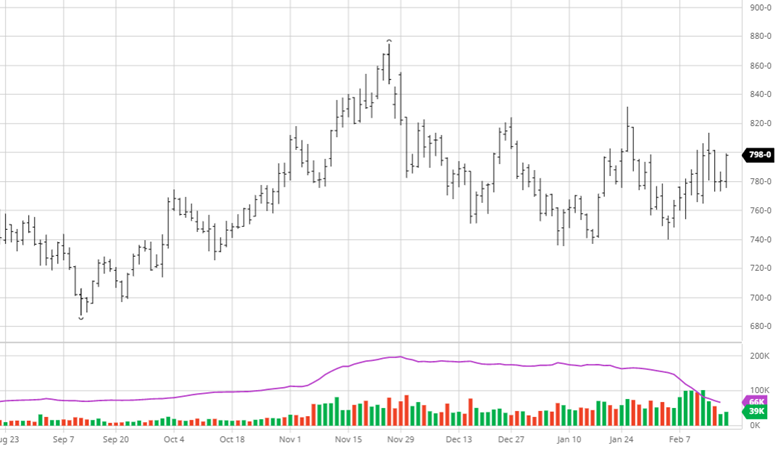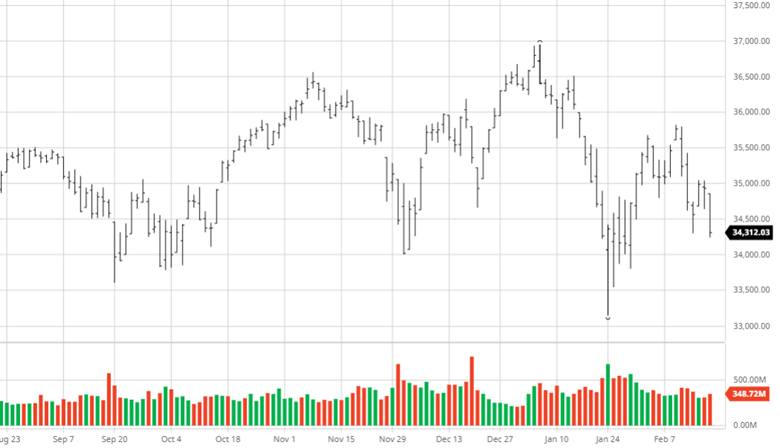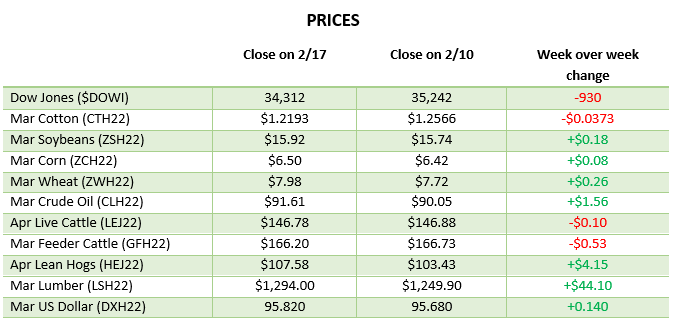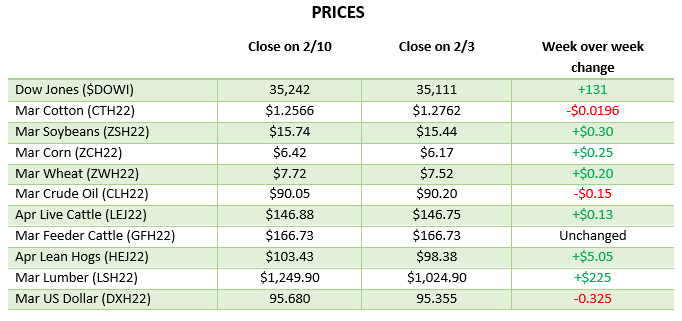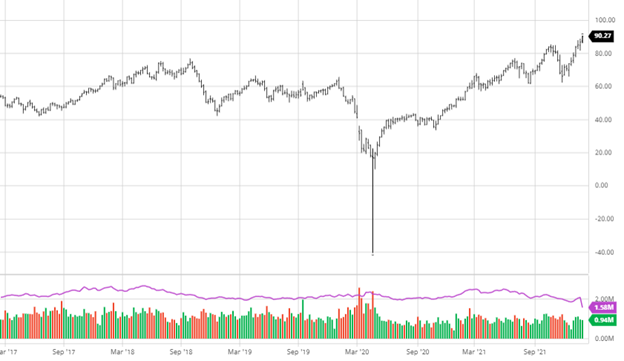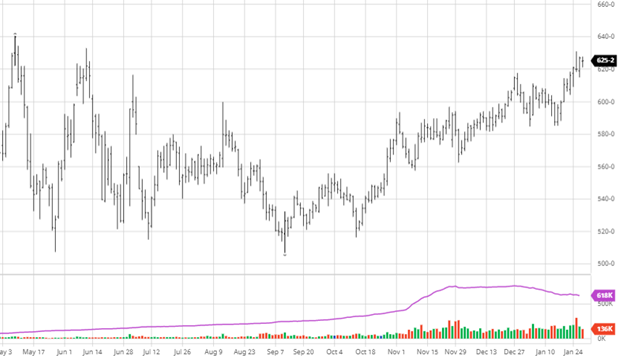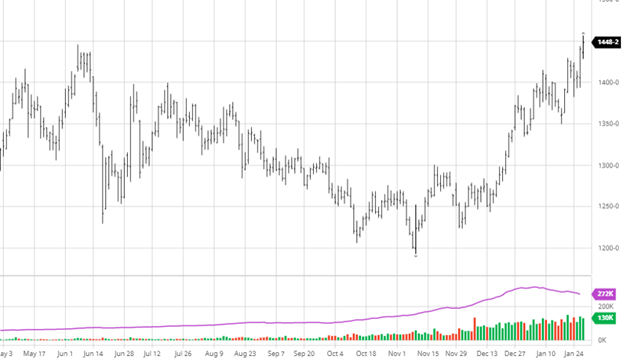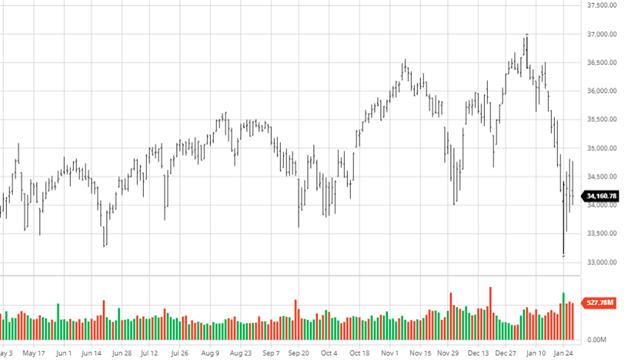It has been an exciting week in futures as it traded each of the five sessions. There was continued volatility, but March closed virtually unchanged from a week ago. That’s progress. We saw that the CME upped the limits, and we’ll also see an article in the WSJ this week referencing the constant limit moves we have. Notoriety is good. At the same time, there has been a slow creep high in total open interest.
It has been a while since the futures and cash markets were this close. However, we’re not sure the futures market is that close to the cash market after hearing numerous reports of cash trades over $1,400. It looks like the market has paused to take a look.
Lumber has always been an industry that would buy into an uptrend and hedge into a downtrend, and there wasn’t much pre-positioning. The same is in place today where a switch is flipped, and we all see the panic on the buy-side. Then another switch is flipped, and you can’t find a buyer. This doesn’t take days or weeks but just hours. The massive cost of a carload of lumber is compounding the problem today. Since we don’t buy on the way down or sell up, there is a large void created on every move.
The last time we sat around $1,200, the momentum indicated a potential for a $400 move in either direction, and it turned out to be down. May is $100 cheaper than March, and July is $100 cheaper than May. The futures market is trying to smooth out the downside, and the upside will organically be smoothed out with time. Coming into Monday, there is a controlled burn to the downside, but the upside could find some running room.
We all know that any hint of better transportation will cause a sell-off. This week, we saw a little pressure from a BC mill finally shipping a few cars to the U.S. on Sunday, February 20. It just seems a little early to get the ball back.
Let’s Get Technical:
The focus here will be on the longer-term chart pattern and its momentum indicators. The most scrutinized area is the last gap left from 1114.90 to 1069.90. (Weekly) a closing of that gap in the March contract would be very negative. It should hold for now and then be an objective after expiration. The market is sitting right on a resistance line at 1264.30. It isn’t a firm point but does come off last year’s high. One positive to note is that the market made a new high on this move taking out the previous high from January. $1,336 is a new weekly high. Finally, if another leg is up, it will take a shot at the weekly gap of 1,514.80 to 1,540.00. The current RSI is at 68%. It hit 94% last year.
The technical read is slightly friendly but primarily neutral. The least resistance is up, as is most of the pain.
Weekly Round-Up:
Let’s take a look back at rising open interest. There is a new segment of the industry using derivatives for risk mitigation. Most of it is coming from the buy-side. This has been a slow-moving process but is now starting to bear some fruit. Obviously, our volatility keeps many out or limits their exposure, but they are around. The March contract shows more signing of a squeeze than any long-term relief. That said, this is a bottomless pit. The rollover will be violent this time, with the mills adding to the downside. We are again building a transit inventory mess, but the issues seem to have longer legs this time. It will drag through March expiration, but will it drag through May’s?
Open Interest and Commitment of Traders:
https://www.cmegroup.com/daily_bulletin/current/Section23_Lumber_Options.pdf
About The Leonard Report
The Leonard Lumber Report is a new column that focuses on the lumber futures market’s highs and lows and everything else in between. Our very own, Brian Leonard, risk analyst, will provide weekly commentary on the industry’s wood product sectors.
Before You Go…
A special guest joins us for this episode of The Hedged Edge, who is well known for his many titles, which include Doctor, Editor-in-Chief, Dean, and Chief Academic Officer, just to name a few. Dr. Channa S. Prakash, Dean of the College of Arts and Sciences (CAS) at Tuskegee University, has served as faculty since 1989 and is a professor of crop genetics, biotechnology, and genomics. He is also well recognized for mentoring underrepresented minority students.
Tune in as biotech guru Dr. Prakash discusses everything from Alabama football, genetics as one of the most extensive agricultural advancements, the most significant risk factors to feeding the world over the next 30-50 years, plus everything in between. And as a bonus, we find out what sport he would be interested in playing if he went professional.







